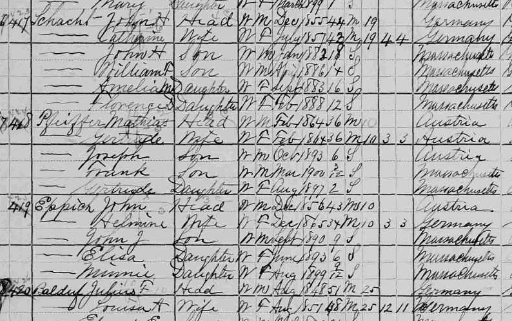My friend and I were working on developing a walking tour of a local neighborhood. We met a few times to walk the area, plan out the sights where we wanted to stop and talk. We noted things that were still there and things that were long gone. At one time, this area was in walking distance to jobs, social and sporting clubs, schools, a tavern, a store and even a beach, it had everything! Today so many components of this neighborhood are long gone and in fact, it is mostly a cut through people use to avoid busy streets. Chances are they don’t even realize they are traveling through what was once a vibrant neighborhood, as they zoom up and down its streets.

Once we had a plan of action, we divvied up the research to be done then we began the process of creating our talk. We consulted printed local histories. Spoke to people who lived in the area. Looked into the roots of their social clubs, and reviewed maps and land deeds to understand how the neighborhood physically grew. We learned a lot about the area…me more so as I have only been here thirty years or so, and my friend is a life long local. However, from all our research we created a robust history and we thought a very informational talk! We looked forward to presenting it and crossed our fingers the pandemic would not put the kibosh on it.
As I was researching my piece of this presentation, it occurred to me, having been on other local history walking tours, that often the presenter gives a little biography on some of the people that had lived in there. I feel, this personalizes the talk…and seeing as I love genealogy, I went about researching some of the original residents of the area. I especially enjoy trying to find information on people whose voices are silent in history. The majority of these people are from the working class and this neighborhood was home to mostly immigrant laborers. People who had come here from Germany and Austria and found jobs in the local tannery and paper mill.

Starting with the 1900 and 1910 US Censuses gave me a list of people to research. I walked the neighborhood to compile a list of homes that would have been there during this era. Then using a variety of genealogical databases, I began to see what I could find on these people. First I started with the Eppich family, as there were several families with that surname living in this neighborhood. I soon discovered that many of the families in this neighborhood were related. So many of the residents here had married Eppich daughters, connecting many of these families together. One of the weirdest things I noticed was how in early census records these families stated they were Austrian, then later noted they were Yugoslavian. I found it odd that these people reported they were from two very different countries. How does someone not know where they came from? As luck would have it, one of the 1920 census takers not only recorded the county of origin, but also the county (or town) within that county of origin. This notation had me checking maps for these little towns in Austria…and the most extraordinary fact became clear; so many of the neighbors that were related and came from a place called Gottschee.

As I dived into this revelation, I learned that Gottschee was a duchy within the Austrian-Hungry Empire. It is often described as a German-speaking island surrounded by a sea of Slavic speaking counties. Originally settled in the 14th century by Germans from several different German and Austrian towns, it was an unpopulated mountainous forest. For over 500 years its German language developed into its own dialect and they maintained their own unique customs. Today, there are practically no Gottscheers living in this area. After World War I, Gottschee became part of a new country: Yugoslavia, and today it’s original borders are in Slovenia. After World War II, the Gottscheers who had lived there were expelled. Some went to Germany or Austria, but most came to the United States. Today the largest populations of Gottscheers live in Brooklyn, NY or in Cincinnati, OH.
Now we know, there was a small community of Gottscheers in Norwood and Walpole, Massachusetts! Although this unique story was new to me, so many descendants of local Gottscheers came to our walking tour and were already aware of their history.
This discovery made this Germantown Neighborhood extra special for me…especially as my little house is in that neighborhood and was home to a Gottschee family.
To me, this is another reason to look beyond vital records to tell a story of an ancestor. Dig deeper. You may be amazed at what you will find!
